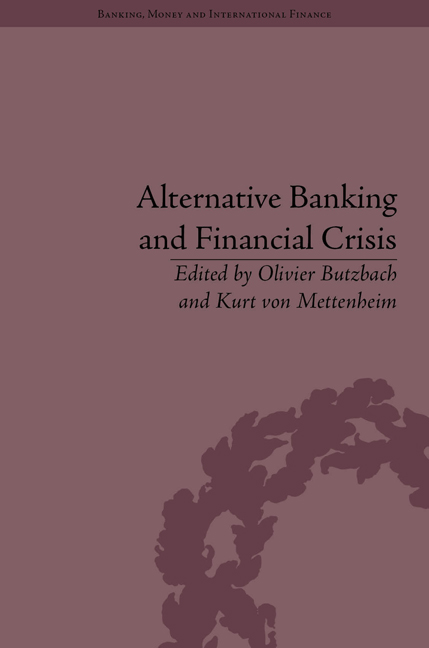Book contents
- Frontmatter
- CONTENTS
- Acknowledgements
- List of Contributors
- List of Figures and Tables
- Introduction
- Part I Historical Context and Conceptual Framework
- Part II Comparative Country Cases
- 5 A Qualitative and Statistical Analysis of European Cooperative Banking Groups
- 6 The Persistence of the Three-Pillar Banking System in Germany
- 7 Alternative Banks in a Dualistic Economy: The Case of Italy before and during the Euro Crisis
- 8 Alternative Banks on the Margin: The Case of Building Societies in the United Kingdom
- 9 The United States: Alternative Banking from Mainstream to the Margins
- 10 BRIC Statecraft and Government Banks
- 11 Cooperative Banks in India: Alternative Banks Impervious to the Global Crisis?
- Conclusion
- Notes
- Index
5 - A Qualitative and Statistical Analysis of European Cooperative Banking Groups
from Part II - Comparative Country Cases
- Frontmatter
- CONTENTS
- Acknowledgements
- List of Contributors
- List of Figures and Tables
- Introduction
- Part I Historical Context and Conceptual Framework
- Part II Comparative Country Cases
- 5 A Qualitative and Statistical Analysis of European Cooperative Banking Groups
- 6 The Persistence of the Three-Pillar Banking System in Germany
- 7 Alternative Banks in a Dualistic Economy: The Case of Italy before and during the Euro Crisis
- 8 Alternative Banks on the Margin: The Case of Building Societies in the United Kingdom
- 9 The United States: Alternative Banking from Mainstream to the Margins
- 10 BRIC Statecraft and Government Banks
- 11 Cooperative Banks in India: Alternative Banks Impervious to the Global Crisis?
- Conclusion
- Notes
- Index
Summary
Introduction
The European banking sector is not homogeneous. Basically, one can distinguish between public banks, investor-owned banks and stakeholder-owned banks. The latter category comprises savings banks, credit unions, mutuals and cooperative banks. There are indications that these stakeholder-owned banks weathered the subsequent storms relatively well so far, without large-scale state support. At the same time, as stated in Part I of this volume, these types of banks did not receive much attention before the financial crisis hit, and hence the question arose why these banks apparently have avoided great financial distress.
This chapter tackles this question for the largest category within the family of stakeholder value banks: European cooperative banking groups (henceforthECBGs). Acknowledging the heterogeneity of ECBGs, the possible connection between the common features and the relative performance of fifteen ECBGs over the latest business cycles is explored. Where appropriate, the text will be larded with concrete examples of individual ECBGs. More specifically, this chapter investigates whether long-standing assertions about the corporate governance and organizational features of stakeholder-owned banks are reflected in differences between performance indicators of ECBGs and all other banks in the time span 1997/2002–2011.
In this respect, this chapter complements existing but scarce academic studies and policy reports on financial cooperatives in various ways.
- Type
- Chapter
- Information
- Alternative Banking and Financial Crisis , pp. 71 - 100Publisher: Pickering & ChattoFirst published in: 2014

